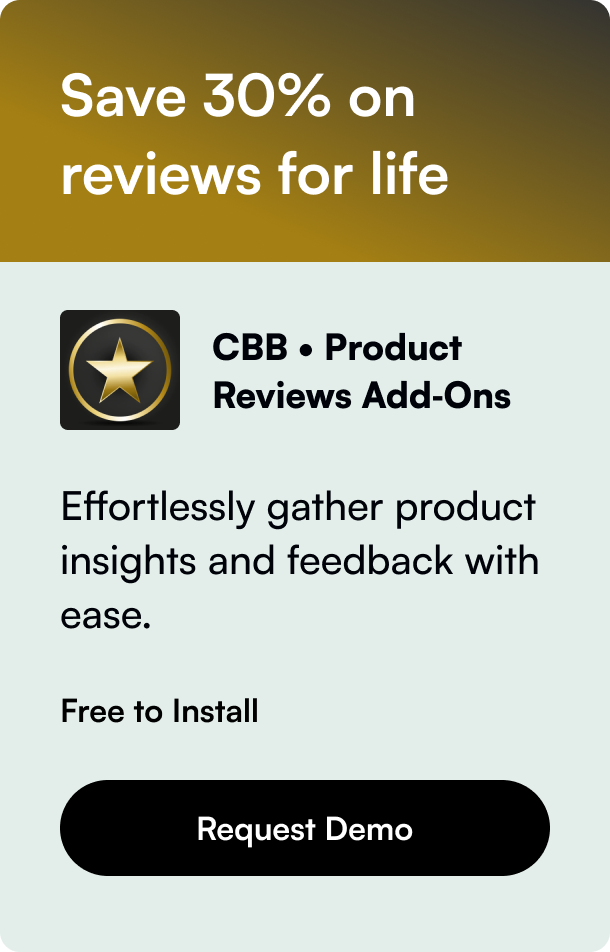Table of Contents
- Introduction
- The Power of Custom HTML in Shopify
- How to Implement Custom HTML Sections in Shopify: A Step-By-Step Guide
- FAQ
- Conclusion
Introduction
Imagine transforming your Shopify store into a remarkably unique digital storefront that not only stands out but also offers your customers an experience tailored exactly to their needs and your brand vision. The secret to this transformative journey lies in customization - specifically, the integration of custom HTML sections into your Shopify theme. This might sound like a daunting task, especially if you're not a seasoned web developer, but it's surprisingly accessible with the right guidance.
This post will walk you through why adding custom HTML to your Shopify store is not only relevant but essential in the highly competitive e-commerce landscape. Whether you want to integrate third-party applications like Eventbrite, embed personalized widgets, or customize your store's aesthetic beyond the default theme settings, understanding how to manipulate HTML will empower you to bring your visions to life.
We'll explore the process of creating and implementing these custom HTML sections, offering insights and step-by-step instructions to seamlessly enhance your site's functionality and design. By the end, you'll have the know-how to personalize your Shopify store, making it a true reflection of your brand while improving user engagement.
The Power of Custom HTML in Shopify
Before diving into the "how," let's understand the "why." Shopify, known for its robust platform, offers a myriad of themes and apps aiming to cater to various business needs. However, these presets might not always align with the unique identity of your brand or the specific functionalities you wish to offer your customers. That's where custom HTML sections come into play, serving as the bridge between the standard Shopify offerings and your custom needs.
Enhancing Brand Identity
A custom HTML section allows you to introduce elements that resonate with your brand's personality. Whether it's a unique call-to-action button, a customized footer, or an interactive banner, these elements contribute significantly to your store’s overall look and feel, distinguishing your brand from competitors.
Custom Functionality
Beyond aesthetics, custom HTML sections empower you to embed additional functionalities into your Shopify store. From live chat widgets to personalized forms or even integrating external platforms like Eventbrite for ticket sales, the possibilities are endless. This flexibility enhances user experience, potentially increasing engagement and conversion rates.
Flexibility and Control
Using custom HTML gives you direct control over your website’s structure, enabling you to tweak and optimize every aspect of your site according to your business needs. This level of customization ensures your site remains agile, capable of evolving alongside your business.
How to Implement Custom HTML Sections in Shopify: A Step-By-Step Guide
Now, let's navigate through the technical jungle to add custom HTML sections to your Shopify store. Recall the forum post regarding the inclusion of an Eventbrite widget in a Shopify store's Debut theme, reflecting a common dilemma: the need to incorporate specific functionality while maintaining aesthetic consistency.
Step 1: Access the Shopify Theme Code
Start by navigating to your Shopify admin panel. Go to Online Store > Themes > Actions > Edit code. This pathway opens the door to the heart of your theme, where all its structural elements reside.
Step 2: Creating a New Section
Here, you're going to create a space specifically for your custom HTML. Click Add a new section and name it with a clear identifier, like custom-html.liquid. This name will help you locate and manipulate the section later on.
Step 3: Injecting the Custom HTML
In your newly created section file (custom-html.liquid), you can now begin to infuse your personal touch. The content varies depending on your objective, but let's use embedding a video as a practical example. Your HTML code might look something like this:
<div class="custom-html">
<!-- Embed your content here, e.g., a video -->
<iframe width="560" height="315" src="YOUR_VIDEO_URL" frameborder="0" allowfullscreen></iframe>
</div>
Replace YOUR_VIDEO_URL with the actual link to your video. This is a simplified example to illustrate the process. The complexity of the code will vary based on the content you're embedding.
Step 4: Displaying Your Custom Section
Head back to the Themes section in your Shopify admin and select Customize. Choose the page where you want your custom HTML section to appear. Click Add Section and select your newly created custom-html section. Adjust its position as desired, preview the changes, and when satisfied, click Save.
FAQ
Can I add multiple custom HTML sections to one page?
Yes, you can create multiple custom sections by repeating the steps above. Ensure each section has a unique name to avoid confusion.
Is it necessary to know HTML or CSS?
Basic understanding of HTML/CSS is beneficial when customizing your Shopify store. However, numerous resources and tutorials are available to help beginners.
What if I encounter issues while adding custom HTML?
Shopify offers comprehensive support for theme customization. Additionally, a vast community of developers and users can provide guidance. Don't hesitate to reach out for help.
Can custom HTML sections impact my store’s performance?
While custom HTML sections offer great flexibility, excessive or poorly optimized code can affect loading times and overall performance. Always ensure your code is clean and only add what's necessary.
Conclusion
Adding custom HTML sections to your Shopify store opens up a realm of possibilities for brand differentiation, enhanced user experience, and functionality integration. By following the steps outlined in this guide, you can embark on a creative journey, transforming your Shopify store into a tailored brand ambassador that captivates and converts. Remember, the key to successfully implementing custom HTML is a blend of creativity, technical understanding, and strategic execution. Your Shopify store is a canvas; custom HTML is one of the many tools at your disposal to create a masterpiece.








